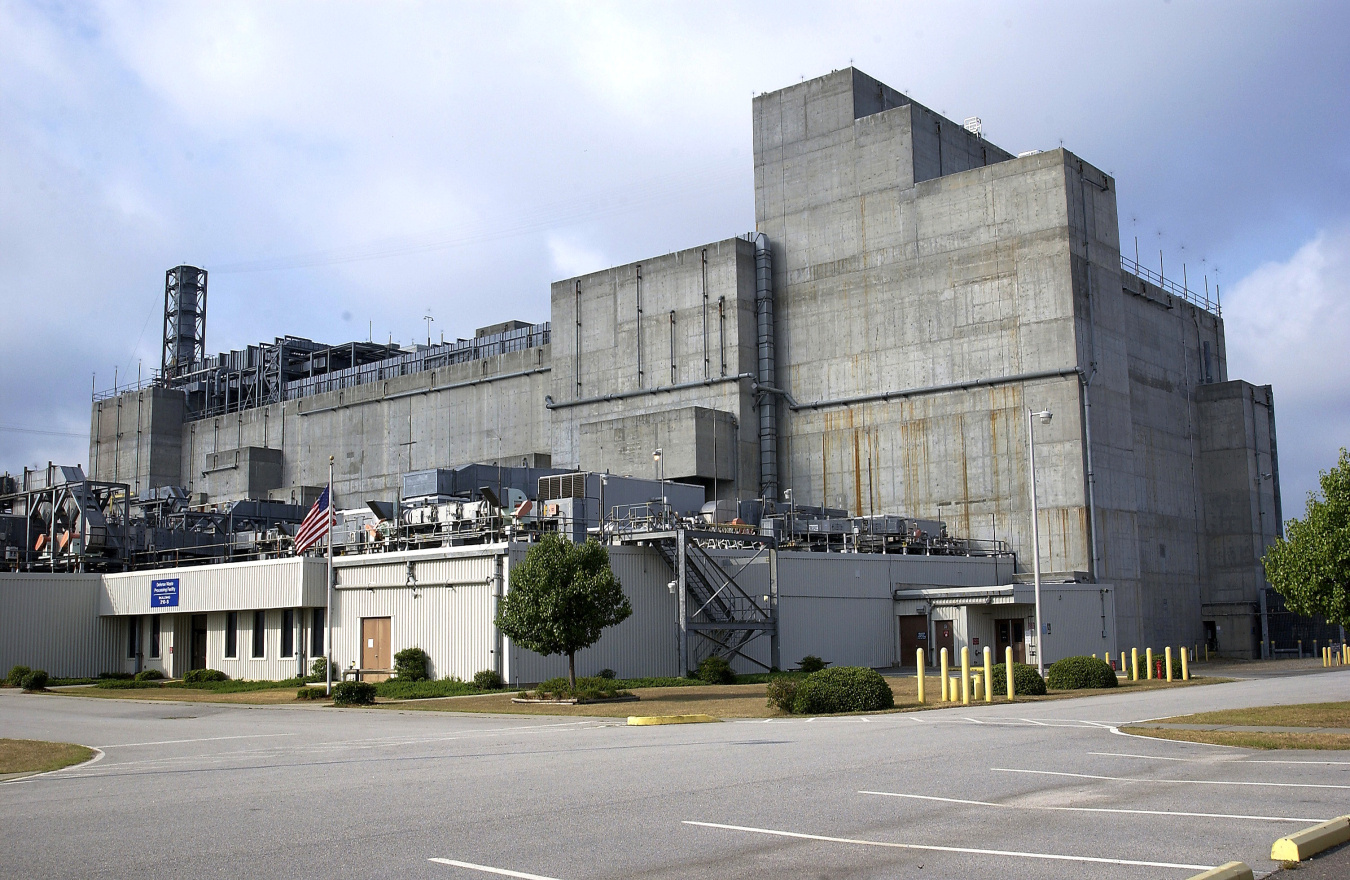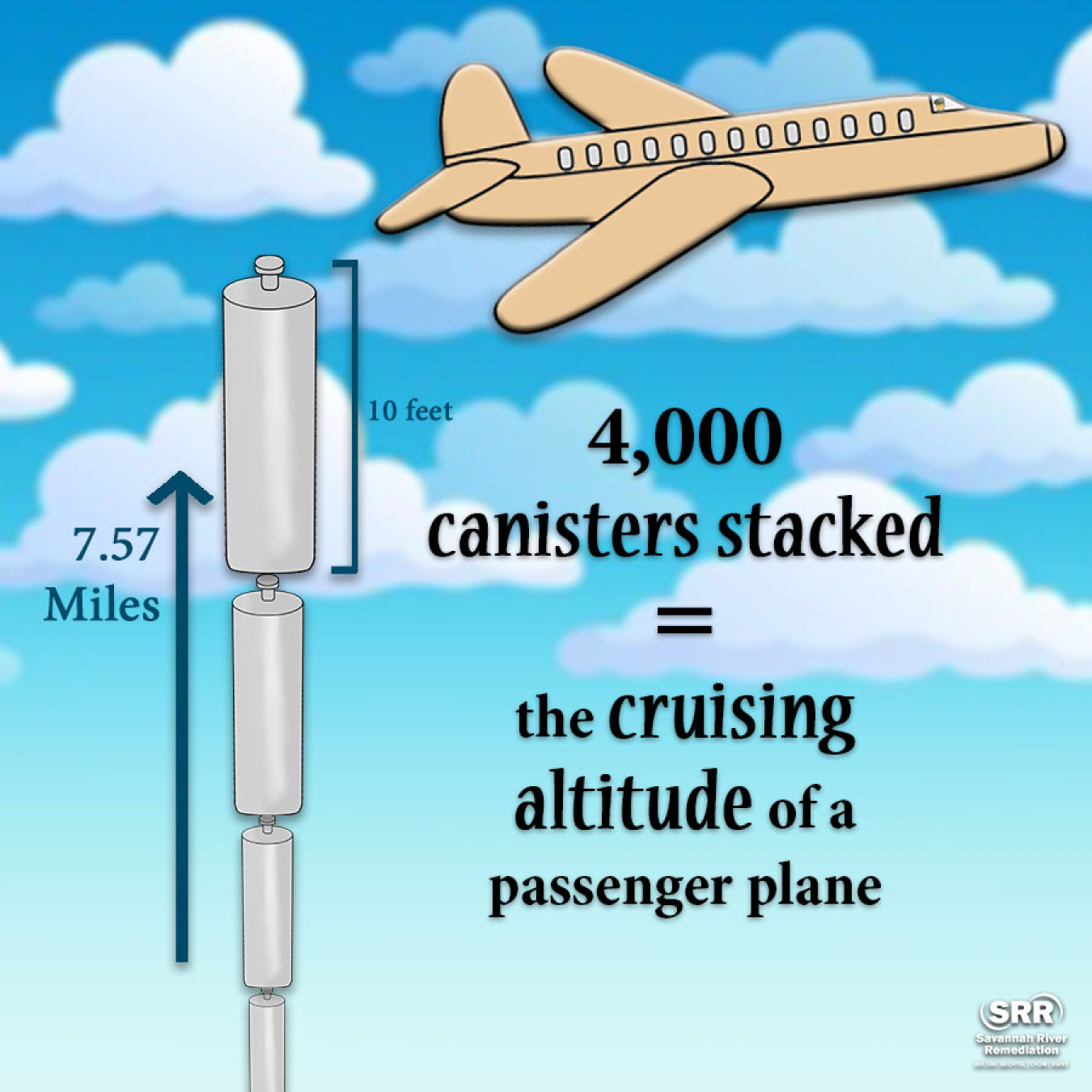AIKEN, S.C. – As EM’s Defense Waste Processing Facility (DWPF) at the Savannah River Site (SRS) closed 2015, workers poured the 4,000th canister of radioactive glass, a major milestone for the robust facility.
January 14, 2016
The Defense Waste Processing Facility.

If 4,000 of the 10-feet tall, 2-feet wide canisters were laid end to end, they would stretch more than 7.5 miles.
AIKEN, S.C. – As EM’s Defense Waste Processing Facility (DWPF) at the Savannah River Site (SRS) closed 2015, workers poured the 4,000th canister of radioactive glass, a major milestone for the robust facility.
What’s more, DWPF will mark 20 years of operation in 2016 supporting EM’s cleanup and risk reduction priorities.
DWPF, which poured the milestone canister on Dec. 31, is the nation’s largest operating vitrification facility, reliably treating the high-activity portion of legacy tank waste. Savannah River Remediation (SRR) operates DWPF and other liquid waste facilities as part of its SRS contract with EM.
The facility converts high-level radioactive liquid waste stored in 43 underground tanks at SRS into a solid glass form suitable for long-term storage and disposal. DWPF operations began in March 1996 and are expected to continue for approximately 20 additional years. DWPF is scheduled to produce about 8,500 canisters.
If 4,000 of the 10-feet tall, 2-feet wide canisters were laid end to end, they would stretch more than 7.5 miles, the distance of a roundtrip from the Pentagon to the U.S. Capitol.
DOE-Savannah River Assistant Manager for Waste Disposition Jim Folk said DWPF continues to provide safe, reliable canister production.
“The results of nearly 20 years of DWPF workhorse operation shows how well this facility operates,” Folk said. “Turning waste into glass continues to provide significant risk reduction for South Carolina.”
The 36 million gallons of tank waste awaiting disposition have about 253 million curies of radioactivity, of which the vast majority will be vitrified at DWPF. A curie is a measure of radioactivity.
SRR President and Project Manager Stuart MacVean said the milestone represents a key achievement in waste disposition for SRS and the nation.
“Successfully immobilizing waste in glass is a technology that is important for our country,” MacVean said. “Our work demonstrates radioactive liquid waste can be put into a safe form, ready for permanent disposal.”
The glassified waste canisters are safely stored onsite until a federal repository is established.

